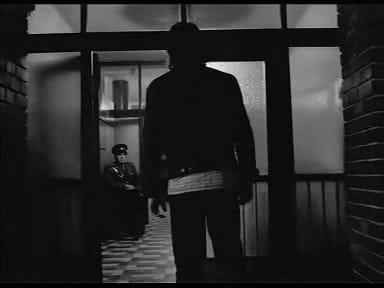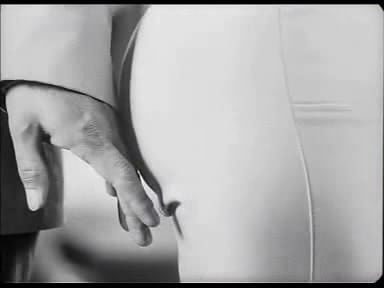András Jeles directed his first film, A kis Valentinó in 1979, the same year as Béla Tarr’s debut Family Nest (Családi tüzfészek). Even though the reviews were mixed at the time, it won The Hungarian Critics Film Award for best debut in 1980. The film begins on a train where we see several random characters, seemingly eavesdropping on them. The very first shot sees a man’s hand lightly touching a woman’s behind. The action is interrupted by an intertitle with a quote.
Nothing is worth more than one day.
Goethe
The film cuts to a man sitting on the train, and then comes another quote.
Tschi-bam, tschi-bamba bambino
a kis Valentinó
Harsáyni
The second quote is from the popular song Jeles took the title from. The film continues on the train showing several people filmed in secret. Eventually, we see a boy that will become the main protagonist. From the start, the spectator is subjected to a mix of candid camera-type shots with staged scenes. Occasionally they will occur in the same shot. The protagonist might be called Laszló, but it’s not sure, and it doesn’t matter much. He is entrusted with some money that he is supposed to deliver. Instead, he decides to steal it and spend it on his own on things he normally wouldn’t be able to afford, like cakes, restaurants and taxis.

In the process, he gets to meet several characters with stories of their own. It wouldn’t be implausible to follow any of them instead, at any given moment. That was actually Jeles’ original plan. He had a project in mind that would stretch over four hours and shot the material needed for such a version. The production company turned down the idea and managed to lay their hands on the material as well, which is now lost forever. The structure is still traceable in the released version. In a storyline with potential conflict, the film rather wanders around, apparently aimlessly. The main concern of the director seems to be the cinematic language.
The cinematic style of A kis Valentinó
Talking about language, one of A kis Valentinó’s many idiosyncrasies is to include texts directly on the image instead of the aforementioned intertitles. They serve various purposes. Sometimes they explain or display the protagonist’s thoughts; on other occasions, they serve a different function. The texts become building blocks in the peculiar form that Jeles creates with his cinematographer Sándor Kárdos. This was an early film for him as well (his second feature), but one can still trace the embryos of his future style. One of the main ideas was to light interiors strictly from the outside, which posed significant challenges. Shot in black & white, there are several striking sequences in the film, like in Sound Eroticism, seven years later.
More often than not, the plot gets “stuck” and will branch out. Those were the branches that Jeles wanted to follow in the initial plan. In a long scene, Laci goes to a restaurant (Yet another example is when some of the characters we encounter weren’t aware they were being filmed). The action (the word is used loosely) shifts between tables, and once again, the light emanates from the outside. One of the most significant scenes in the film is when the protagonist sets fire to a trash can. Instead of being excited about the outcome, he merely lies on a bench and lets others react. Those were pedestrians who were not aware of being filmed.
The reputation of A kis Valentinó has grown over the years, and in 2000 it was voted as one of The New Budapest 12, which was the second attempt to choose the 12 best Hungarian films ever made. Jeles would make other successful films, such as The Annunciation (Angyali üdvözlet 1988), where children act all the roles, 1This is the only film available at Eastern European Movies and the Holocaust-themed Why He Wasn’t There (Senkiföldje1993), but A kis Valentinó remains his greatest achievement. One of his sons is Laszló Nemes, who had a major breakthrough with his debut feature Son of Saul (Saul fia 2015), which even won the Oscar for best international film.
Talking about world-famous directors, the ending of Jeles’s first film wouldn’t be out of place in a later film by the previously mentioned Béla Tarr. The film was digitally restored and released on DVD in 2013 but is, at the moment, not available online.

